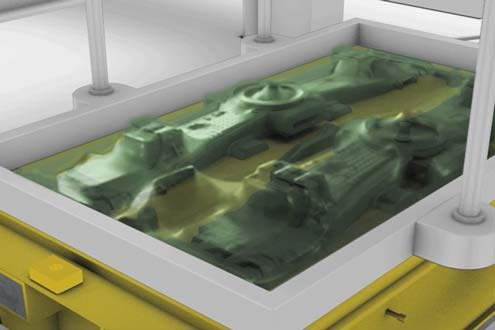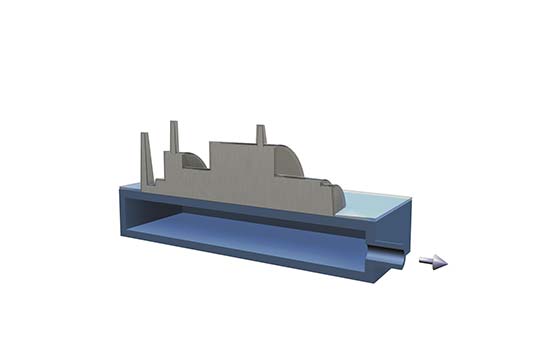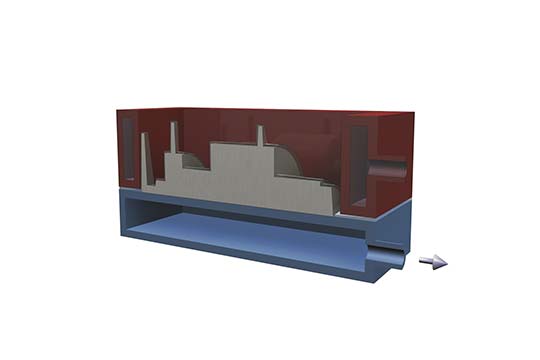
Mould compaction without binder – using the force of nature
The V-PROCESS or vacuum moulding process remains a modern technology for the production of high quality cast parts.
The process
The vacuum moulding process – also known as the V-PROCESS – is a moulding process that involves the physical binding of the mould sand. It was developed in 1972 by Sintokogio. The mould sand consists of a wide variety of sands, which are free of any binder and water. Compaction of the mould sand takes place with atmospheric air pressure, which acts on the mould sand in the mould flask due to the negative pressure produced. The result is fully homogeneous compaction over the entire mould volume.
The vacuum moulding process always offers the optimum solution for individual and series production due to its flexibility.
Application
- For cast parts from 0.1 kg to 12,000 kg
- Suitable for all castable metals
- Mould flask sizes from 300 mm to > 4000 mm
- Outputs from 1 mould per day up to 60 moulds per hour
The principle

Step 1
Heat mould film and draw over
the model with a vacuum.
Step 2
Apply finishing coat
to the model film.
Step 3
Place mould flask
on the model.
Step 4
Fill with sand and lay cover film on top.
Compact the mould with a vacuum.
Step 5
Separate mould from
model.
Step 6
Position
cope and drag part mould.The advantages
Environment
- Reduces harmful emissions through the use of binder-free mould sand
- Reduces odour pollution
- Minimal noise pollution, no vibrations required for cast emptying, improved workplace conditions
- Optimum energy consumption
Costs
- Low mould sand costs
- Low costs for mould sand regeneration
- Reduction in disposal costs
- Low model costs, no model wear
- Flexible application-optimised system layouts
Quality
- Maximum dimensional accuracy
- No casting errors due to binder or water
- Finely structured surfaces
- Regular mould hardness throughout the complete mould
- Mould draft angles of up to 0°
- Improved flow characteristics of the melt in the mould
- Optimally suited for thin-walled cast parts
- Targeted cooling (relaxation) of the mould
- Casting problematic alloys possible
